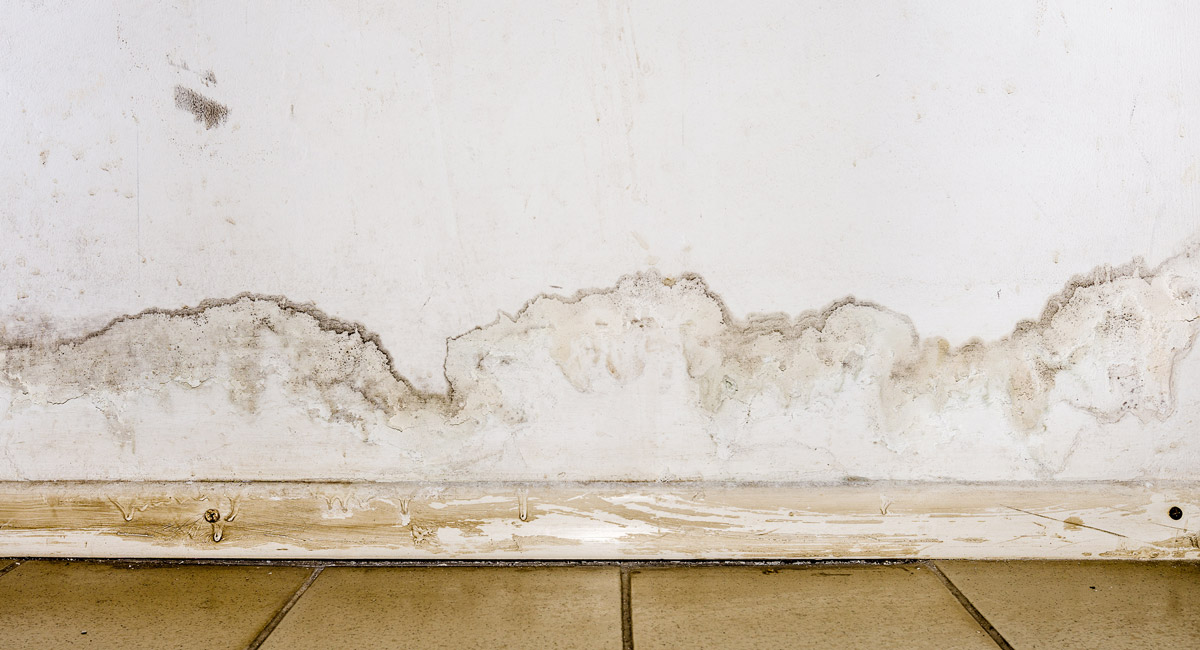Have you ever asked yourself what lies behind that mysterious phenomenon we call rising damp? If you own a property or work in the building trade, it could be more important than you realise. In this article, we’ll take a deep dive into the world of rising damp, to understand how it works and to learn about its potential effects. Read it, and you need never be confused again!
Understanding rising damp: An essential guide to protecting the structural integrity of your property
Rising damp. It may seem a tricky concept to grasp, but if you own a property or work in the building trade, it’s crucial to understand it. We’ll aim to explain it in a simple, comprehensible way.
How rising damp works
Let’s start by looking at how rising damp works. Moisture from the ground is drawn up into building materials such as concrete or stone by a mechanism called capillarity. Essentially, the material sucks up water against the force of gravity. This water also contains mineral salts such as nitrates and sulphates, which can damage walls and wall coverings.
Potential causes of rising damp
There are a number of reasons why you may experience rising damp. Firstly, there’s the make-up of the surrounding soils. Sandy or clay-rich soils are more likely to cause rising damp than other, more compact types of soil. Another key factor is the level of the water table: the closer it is to the surface, the greater the risk of rising damp.
How does rising damp affect buildings?
Now let’s look at the issues rising damp could cause in your property. Moisture seeping up walls can create considerable problems, with common signs being staining, damage to plaster and concrete, blistering paintwork and, in the long term, structural issues. Damp also promotes the growth of mould, which can have a detrimental effect on air quality, and lead to health problems for the occupants.
It’s essential we understand how rising damp works, the conditions in which it thrives and the potentially devastating effects it can have on property. In the following sections we’ll take a closer look at the signs and symptoms, and at the treatments available to help you protect the health and integrity of your home.
Signs and symptoms of rising damp
So what are the common signs of rising damp, and how do we spot them?
The first signs are usually visual. You may notice damp patches on the walls, often crescent-shaped, which don’t disappear even when repainted. Paint and plaster may then start to flake away, revealing a damaged surface, and the affected walls may feel cold and damp to the touch even in dry weather. And constant damp encourages mould, which can give off an unpleasant odour.
If you think you might have rising damp, it’s important to inspect your property on a regular basis, keeping a close eye on the walls, especially where they connect with the ground. Look out for the signs mentioned above including damp patches, blistered paint and musty odours.
Rising damp commonly occurs in cellars and basements, as they are in direct contact with the surrounding soil, but don’t forget to check the ground floor too. If you suspect rising damp, remember to act without delay. Taking swift measures will help minimize the extent of the damage.
Early detection is essential to prevent costly remedial work. Stay vigilant, carry out regular inspections and never downplay potential signs of rising damp.
Diagnosing rising damp
Inspection and diagnosis step by step
There are several distinct stages in identifying the presence of rising damp. It starts with a detailed inspection of your home. Your BFL® professional will carefully examine the internal and external walls, looking for visual indications such as damp patches, blistering paint or structural damage. They will also assess the level of the water table, which can be a key factor.
Professional tools and methods
To make an accurate diagnosis, your BFL® professional will use a number of specific tools and techniques. One of the most common is the moisture meter, used to measures moisture levels in the fabric of the building. It can also take samples of the building materials and analyse their mineral salt content.
Another technique involves inserting probes into small holes drilled into the wall. These make it possible to monitor moisture levels continuously, confirming the presence or absence of rising damp.
Why call your BFL® expert for an accurate diagnosis?
An accurate diagnosis is vital. Rising damp is often mistaken for other damp issues, and a misdiagnosis could lead to unnecessary, ineffective and expensive remedies. Your BFL® expert will be able to differentiate between the different types of damp and offer you the most appropriate solution.
They also have the experience necessary to assess the severity of the problem and suggest the best way to approach it. Carrying out a DIY quick-fix may simply exacerbate the problem and let it get out of hand. Call a BFL® expert to ensure you get an accurate assessment and effective treatment solution.
Rising damp treatments: What’s best for you?
Introducing the BFL® approach
The Electromagnetic and Geomagnetic Polarity Inverter (I.P.E® and I.P.G®):
- Non-invasive: unlike other methods, the I.P.E® and I.P.G® involve no major building work or chemical products. Both are 100% non-invasive solutions.
- Effective: A large number of users report positive results. The I.P.E® and I.P.G® can significantly reduce the problems of damp in buildings.
- Durability: Once installed, the I.P.E® and I.P.G® require little maintenance and can provide a long-term solution.
Why choose the I.P.E® and I.P.G® to tackle rising damp in your home?
The I.P.E® and I.P.G® offer a unique approach to treating rising damp. Unlike other methods, they don’t just mask the problem, but tackle and eliminate it at source. They create an electromagnetic barrier, protecting the integrity of the building without the need for major remedial work. Essentially, electromagnetic and geomagnetic polarity inverters prevent water from rising up the walls. This is innovation at its best, a planet-friendly solution requiring no invasive work.
Chemical barriers: DPC injections – creating a horizontal barrier by injecting chemicals – are often used to treat rising damp. Treatment consists of injecting chemicals into the walls to stop the moisture rising. The solution can be very effective, but it takes an expert to execute it correctly. It can also be expensive, and has a negative impact on the environment.
Drainage: A new drainage system could be installed to remove excess water from the surrounding soil, or the existing system can be improved. Although this is often an effective long-term solution, it can be expensive to implement.
Waterproofing: Waterproofing the walls is another approach to dealing with damp, and involves repairing joints and applying waterproof coatings to prevent moisture from penetrating the walls.
Choosing the right solution for you
The treatment you choose depends on a number of factors, including the severity of the problem, its cause, and of course, your budget. Consult your BFL® expert to make a professional assessment of your particular situation.
Do you think you might have rising damp? Act now, call your BFL® specialist, and don’t let rising damp spoil the comfort and tranquillity of your home.






